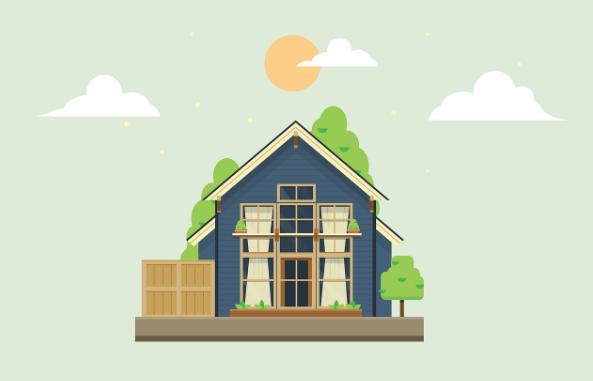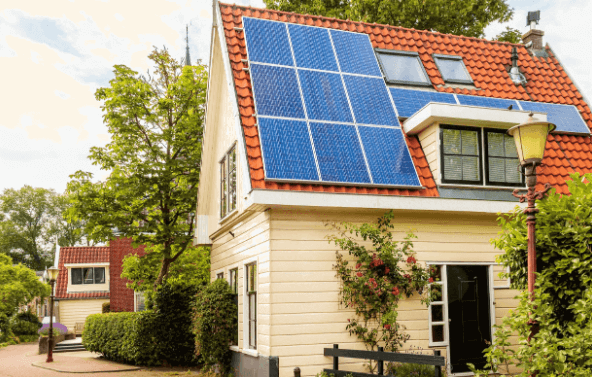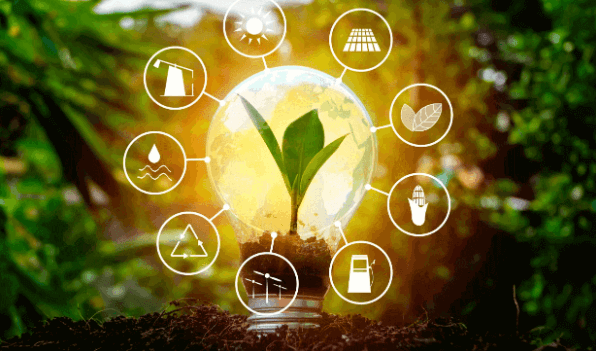Integrating Renewable Energy and Green Building Materials for a Sustainable Future
The demand for sustainable properties is higher than ever. Whether you’re a prospective homebuyer or a business owner, more than 60% of millennials consider sustainability a priority in their property’s future.
This guide will help you understand renewable energy, green building materials, and how to integrate them into properties for a sustainable future.
What Are Renewable Energy and Green Building Materials?
As homes and businesses increasingly focus on sustainable development, renewable energy, and green building materials have become more in demand. However, what defines these materials, and how are they used?
- Renewable energy – A power source that doesn’t run out. Examples of natural or self-replenishing energy sources include solar, wind, and hydroelectric.
- Green building materials – Construction materials that produce fewer emissions than traditional ones. Examples include reclaimed wood, recycled glass, and plastic.
Renewable energy and green building materials often pair to create a more sustainable property, one that is fit for an eco-friendly future. However, sustainable energy and materials don’t only have to be raw.
Sustainable production of homewares can also help reduce the carbon footprint, mainly when raw materials are incompatible with your property. Many owners look to decor, such as sustainably produced bathroom tiles, to meet their emission reduction targets.

How to Integrate Renewable Energy and Green Materials
One of the most frequently asked questions by environmentally conscious property owners is how they can integrate renewable energy sources and green building materials into a home or business. Many sustainable construction practices utilize widely available assets, which are both cost-efficient and practical.
There are three main approaches to integrating renewable energy and green materials into properties.
Passive Integration
Integrating passive sustainable assets into your home means utilizing natural systems that require no power. Primary approaches to integrating energy sources and materials passively include:
- Natural lighting – Implement windows and skylights to illuminate areas of the property.
- Wind ventilation – Design areas of the building to allow natural airflow to enter through windows and doors.
- Solar heating – Use window systems to heat rooms in winter with sunshades and various layers of glazing to keep them cool in summer.
- Recycled materials – Utilize recycled materials for construction, such as timber, glass, and steel.
- Insulation – Install insulation systems with green materials that retain indoor temperatures.
Active Integration
Active design utilizes technology to integrate renewable energy and environmentally friendly building materials into properties. The systems will need power from sustainable sources to function.
Active integration includes:
- Solar panels – Systems that generate electricity from sunlight, usually installed on property roofs.
- Heat pumps – Create a more energy-efficient heating system by capturing heat from the air, ground, or water.
- HVAC systems – Many new HVAC systems, such as air conditioners, are sustainable and powered by renewable sources.
- Greywater conservation – Installing filtration systems can capture water not used in laundry, showering, or dishwashing and reuse it for other purposes.
- Wind turbines – Systems that are mostly found on large properties can generate electricity through airflow.
Retrofitting
Retrofitting is the practice of upgrading or replacing existing property systems with more sustainable ones. Many owners will source and integrate materials that help save costs, make structures more environmentally friendly, and increase property value.
Examples of retrofitted integration include:
- Airtightness – Ensuring there are no air leaks, such as sealing windows and doors with foam sealant or silicon caulk.
- Sustainably sourced materials – Refitting your house with sustainably produced materials when necessary, such as bathroom renovations with a subway tile shower.
- Energy consumption visibility – Installing systems that show energy consumption around your property could help optimize its usage.

Challenges of Integrating Renewable Energy and Green Materials
Like any industry seeking to have a positive impact on the planet, there are challenges to integrating renewable energy and green building materials, particularly in the solar energy sector. Those looking to install passive and active measures or retrofit their properties may run into some common roadblocks.
- Lack of available materials
- Expertise required for some installations
- Local regulatory and compliance issues
- Costs can vary significantly
- Slow adoption
Building a Sustainable Property for the Future
Despite the challenges of integrating renewable energy and green building materials, the benefits outweigh the drawbacks. The long-term benefits of carbon reductions, energy efficiency, and waste minimization not only save costs and help the environment but can also increase your property value.
If you want to build a sustainable property for the future, now is always a good time to start.

